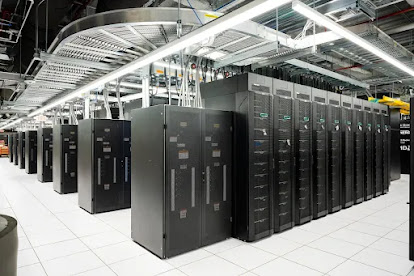SuperComputer : God of Technology
What is a Supercomputer ?
# How Supercomputers Work
These systems are often built from specialized processors like GPUs (Graphics Processing Units) or TPUs (Tensor Processing Units), designed to handle massive amounts of data and complex algorithms efficiently.
# Applications of Supercomputers
Here are some key areas where supercomputers are making a massive impact:
1. Scientific Research
Supercomputers are the backbone of modern scientific exploration. For example, supercomputers help climate scientists model global warming scenarios, taking into account countless variables that influence the Earth’s atmosphere.
2. Medicine and Healthcare
In the medical field, supercomputers are revolutionizing drug discovery and personalized medicine. By simulating how drugs interact with proteins, cells, and DNA, they can dramatically shorten the time it takes to develop new treatments.
3. Artificial Intelligence and Machine Learning
AI and machine learning rely on massive datasets and complex algorithms. Training sophisticated models like CHATGPT-3 (the predecessor of this model) requires extensive computational resources.
4. Space Exploration
Supercomputers also aid in space exploration, such as simulating spacecraft landings or determining the optimal flight paths for missions to distant planets.
5. National Defense and Security
Governments across the globe utilize supercomputers for national security purposes. Whether it’s modeling nuclear reactions for defense purposes, breaking down cryptographic algorithms, or analyzing massive data streams for intelligence gathering, these systems are essential for keeping nations secure in the digital age.
# The Top Supercomputers in the World
The TOP500 list ranks the most powerful supercomputers globally, updated twice a year. Here are a few standout machines from recent years:
Fugaku (Japan): This supercomputer, developed by RIKEN and Fujitsu, currently holds the title of the world’s fastest, capable of performing over 442 petaflops. Fugaku is used in areas like drug discovery, climate forecasting, and AI research.
Summit (USA): Built by IBM for the Oak Ridge National Laboratory, Summit was the fastest supercomputer before Fugaku and is still among the top contenders. It’s designed for both AI and scientific simulations, with applications ranging from energy research to precision medicine.
Sierra (USA): Another IBM machine, Sierra is dedicated primarily to national security simulations for the U.S. Department of Energy.
# Conclusion
Supercomputers have come a long way since their inception, evolving into machines capable of performing previously unimaginable tasks. They are driving innovation across every scientific and industrial field, pushing the boundaries of what’s possible.
References :-
- https://en.wikipedia.org/wiki/Supercomputer
- https://www.ibm.com/topics/supercomputing
- image link- https://www.scientificamerican.com/article/new-exascale-supercomputer-can-do-a-quintillion-calculations-a-second/



Comments
Post a Comment